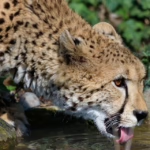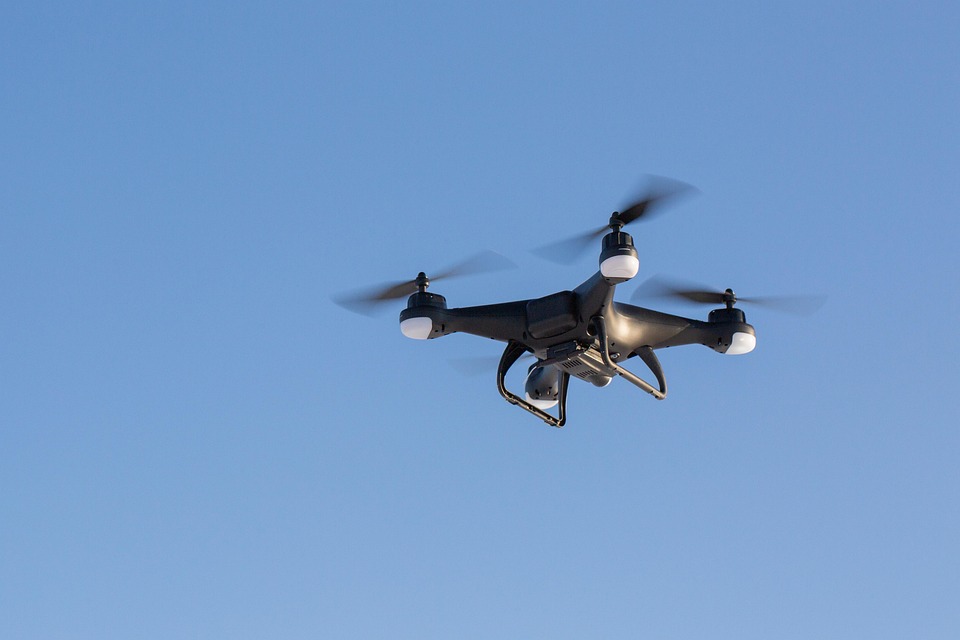Behind the Wings: Understanding the Mechatronics of Modern Drones
Introduction
The advent of drone technology marks a transformative period in various sectors, from agriculture to surveillance, and even in creative industries. The integration of mechatronics—a multidisciplinary field that combines mechanics, electronics, computer science, and control engineering—has played a pivotal role in the development of modern drones. Understanding the mechatronics behind drones offers insights into their design, functionality, and potential future applications.
In this article, we’ll delve into the various components and technologies that make up modern drones, exploring topics such as their aerodynamic design, control systems, and the burgeoning use of artificial intelligence (AI) in autonomous flight.
Chapter 1: What is Mechatronics?
Mechatronics is the synergy of mechanical engineering, electronics, computer science, and control engineering. This interdisciplinary framework facilitates the design and manufacture of intelligent systems and products. In the context of drones, mechatronics combines hardware components like motors and sensors with software and control algorithms to create machines capable of autonomous flight.
1.1 The History of Mechatronics
The term “mechatronics” was originally coined in Japan in the late 1960s by Tsukasa Ogawa, referring to the integration of mechanical and electronic systems. Over the decades, this field has evolved to incorporate advancements in computing and software development. This evolution has been crucial in enhancing the capabilities and functionalities of drones.
Chapter 2: The Physical Structure of Drones
2.1 Frame and Materials
A drone’s frame is typically constructed from lightweight materials such as carbon fiber, plastic, or aluminum. These materials offer a high strength-to-weight ratio, which contributes to flight efficiency.
Key Considerations:
- Weight Distribution: The distribution of weight in the frame impacts stability and maneuverability.
- Durability: The frame must withstand environmental factors like wind and rain.
2.2 Propulsion Systems
Drones typically utilize multi-rotor configurations (like quadcopters) or fixed-wing designs. Each design has its advantages and applications.
Multi-Rotor Drones
- Advantages: Increased maneuverability and the ability to hover.
- Challenges: Shorter flight times due to higher energy consumption.
Fixed-Wing Drones
- Advantages: Efficient for long-distance travel and better endurance.
- Challenges: More complex landing and takeoff requirements.
Chapter 3: Control Systems
3.1 Sensors and Actuators
Understanding how drones sense their environment is critical for safe and effective flight.
Key Sensors:
- IMUs (Inertial Measurement Units): Combine accelerometers and gyroscopes to provide orientation and velocity data.
- GPS: Provides location data for navigation.
- Cameras and Lidar: Used for obstacle detection, landscape mapping, and automated piloting.
Actuators:
- Motors: The primary means of propulsion, generally brushless DC motors for efficiency and reliability.
- Servos: Control various mechanical parts like gimbals and flaps.
3.2 Flight Control Algorithms
The flight control system is the brain of the drone, interpreting data from the sensors and instructing the actuators accordingly.
PID Control Systems
Proportional, Integral, Derivative (PID) controllers are commonly employed for stability in flight. These systems calculate an error value as the difference between a desired setpoint and a measured process variable.
More Advanced Control Systems
Emerging algorithms, such as fuzzy logic and adaptive controls, are being researched and developed to improve flight stability and adaptability in changing environments.
Chapter 4: Communication Systems
4.1 Remote Control
Most drones are operated via remote control, employing radio frequency (RF) communication. Understanding the bandwidth, latency, and range of communication is essential for effective drone operation.
4.2 Autonomous Communication
With the advent of AI, modern drones are increasingly capable of autonomous navigation. They rely on a suite of sophisticated communication protocols, including:
- Mesh Networking: Drones can communicate with each other to share data and improve information gathering.
- Satellite Communication: Utilized for long-range navigation and data transmission.
Chapter 5: Power Systems
5.1 Battery Technologies
The energy source for drones is one of the most critical elements of their design. Various battery technologies, including lithium-polymer (LiPo), lithium-ion, and newer solid-state batteries, are used.
Key Factors:
- Energy Density: Determines how long a drone can fly.
- Charging Time: Affects the operational efficiency.
5.2 Power Management Systems
Drones require sophisticated power management systems to optimize battery usage. This includes monitoring battery health and ensuring efficient energy consumption by the motors and onboard systems.
Chapter 6: Software and AI Integration
6.1 Operating Systems and Software Frameworks
Modern drones operate on specialized operating systems that manage various hardware and software components. Popular platforms include:
- PX4: An open-source flight control software.
- ArduPilot: A flexible autopilot software suite suitable for various vehicle types.
6.2 Artificial Intelligence in Drones
AI technologies enable drones to perform complex tasks like object recognition, automated navigation, and data analysis.
Machine Learning:
Utilized for developing algorithms that help drones learn from their environment and improve performance over time.
Computer Vision:
Drones equipped with cameras use computer vision for tasks such as mapping, monitoring crops, and detecting obstacles.
Chapter 7: Regulatory Framework
7.1 Understanding Drone Regulations
With the rapid proliferation of drone technology, regulatory frameworks have become increasingly important. Different countries have varying laws governing the use of drones, including:
- Licensing Requirements: Operators often need to obtain licenses.
- Airspace Restrictions: Designated no-fly zones must be adhered to.
7.2 Safety and Compliance
Adhering to established guidelines not only enhances safety but also helps to mitigate risks associated with drone operations.
Chapter 8: Applications of Drone Technology
8.1 Agriculture
Drones have revolutionized precision agriculture, allowing farmers to:
- Monitor Crop Health: Using multispectral imaging to analyze plant health.
- Assess Field Conditions: Real-time data collection helps optimize farming practices.
8.2 Surveillance and Security
Drones are increasingly used in public safety and security applications, including:
- Crowd Monitoring: Providing real-time surveillance during events.
- Search and Rescue Operations: Offering aerial views in disaster-stricken areas.
8.3 Creative Industries
In the realm of film and photography, drones offer expansive creative possibilities. Their ability to capture stunning aerial footage has changed the landscape of visual storytelling.
Chapter 9: The Future of Drone Technology
9.1 Autonomous Delivery Systems
One of the most exciting applications of drone technology is in logistics. Companies like Amazon are exploring the feasibility of drone delivery systems to optimize package distribution.
9.2 Urban Air Mobility
The concept of Urban Air Mobility (UAM) envisions drones as a regular mode of transportation in crowded urban settings, potentially alleviating traffic congestion.
9.3 Environmental Monitoring
Drones are also poised to play a transformative role in environmental studies, helping researchers monitor climate change, deforestation, and wildlife.
Conclusion
The mechatronics of modern drones encapsulates an intricate blend of various technologies and disciplines. By understanding these components, we gain a clearer picture of the capabilities associated with drones and their potential impact across different sectors.
The future of drone technology holds promise, signifying not just advancements in efficiency but also ushering in innovative applications that elevate various industries. As research continues and regulations evolve, the sky may not be the limit for drones but merely the beginning.
References
- Anderson, J. (2020). The Evolution of Drones: From Military to Civilian Applications. Journal of Technology and Society.
- Gu, Z. (2019). Mechatronics and Its Applications in Drones. Mechatronics Journal, 45(2), 114-129.
- Moore, T. (2021). AI and Drones: The Future is Now. International Journal of Automation and Robotics.
- Robinson, T. (2022). The Regulatory Landscape of Drones Worldwide. Aviation Law Review.
- Smith, K. (2023). Future Trends in Drone Technology: A Look Ahead. Technology Tomorrow Magazine.
This article only scratches the surface of the complex topic of drone mechatronics. For a deeper understanding, further research and continuous learning in this rapidly evolving field are encouraged.


























Add Comment